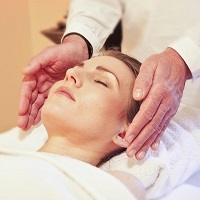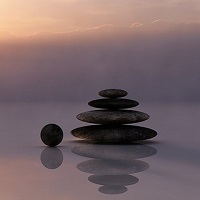 Reiki is a totally versatile form of natural healing and there are many ways to go about the reiki treatment procedure. This article relates to full body treatments and short treatments under the Usui Reiki system, which is one of the more popular and recognised forms of reiki in the Western world. It applies to “in person” healing, where the healee is present. (As opposed to reiki distant healing where the recipient is not. See Distant Healing With Reiki.)
Reiki is a totally versatile form of natural healing and there are many ways to go about the reiki treatment procedure. This article relates to full body treatments and short treatments under the Usui Reiki system, which is one of the more popular and recognised forms of reiki in the Western world. It applies to “in person” healing, where the healee is present. (As opposed to reiki distant healing where the recipient is not. See Distant Healing With Reiki.)
Below are some points to be aware of prior to a traditional Usui Reiki treatment. These will help you to prepare for the session, and give you a good idea of what to expect during and after.
How To Prepare for a Reiki Session
In order to make the most of your reiki session there are some points to bear in mind before it begins. Sometimes the session will take place at your home. Check what requirements your therapist has. Most often they will just need an area to practice without noise and interruption as far as possible. Before the session, it’s a good idea to switch off or silence your mobile phone and any other distractions.
Your therapist will probably also need space to put up their treatment bench. With this in mind, it would be useful for them to park close to your house so they don’t need to struggle too far with their equipment. If you’re travelling to a session, know in advance exactly where it’s being held. Know how to get there, plan your journey giving you enough time to arrive without rushing around and arriving in a state of stress.
Make sure the practitioner is aware of any special requirements or physical limitations you have, for example if you have trouble lying down or turning over. Treatments can be carried out sitting or even standing if necessary.
It’s useful if the practitioner is aware of any health issues you have, and if there are any particular areas you would like to focus the treatment on. (If you have health issues, speak to your doctor before commencing any form of complementary treatment as a precautionary measure.) However, reiki is an “intelligent” energy and will go wherever it’s needed. In addition, your therapist will scan you for particular healing needs at the beginning of the session (see below.)
It’s important to be comfortable whilst having your treatment so you can fully relax and enjoy it. You should be neither too hot nor too cold. Outer clothing should be removed such as a coat and possibly shoes and loosen any restrictive items, but you will remain fully clothed. Some practitioners ask that you remove jewellery and quartz watches as they may interfere with the flow of energy. All therapists are different so find out how yours prefers to work in advance.
It’s advisable to take your glasses off if you wear them as one of the hand positions of traditional treatment is over the eyes. If you wear contact lenses you might want to take them out incase you fall asleep during the session. Another point to note for your comfort, it’s best not to eat a big meal just before your session, and if possible avoid caffeine or other stimulants. If you’re feeling bloated and hyped you’re not going to enjoy the session as much as you could.
During the Session – What to Expect
Your reiki practitioner may perform the therapy either hands on or hands off. Hands on will involve actual physical contact with your body without applying any pressure or manipulation. If you are receiving a hands off treatment, the practitioner’s hands will hover a couple of inches above your body.
Traditionally a sequence is followed where the hands are placed at the main chakras or energy centres. (Articles on the chakras to follow soon…watch this space). Other therapists prefer to concentrate on the bodily organs, others just go with the flow and place their hands where intuition guides them.
 Make the most of the opportunity to relax during the treatment. There may be some music playing quietly in the background. You don’t need to talk during the session and the therapist will generally expect a comfortable silence so they can focus and zone in on the energies they are channelling. Having said that it’s O.K. to speak should you so wish. The energy won’t stop working if you do! Don’t be afraid to mention if you’re uncomfortable or need to go to the loo.
Make the most of the opportunity to relax during the treatment. There may be some music playing quietly in the background. You don’t need to talk during the session and the therapist will generally expect a comfortable silence so they can focus and zone in on the energies they are channelling. Having said that it’s O.K. to speak should you so wish. The energy won’t stop working if you do! Don’t be afraid to mention if you’re uncomfortable or need to go to the loo.
You might feel a tingling sensation, or feelings of heat or coldness whilst receiving reiki. Some people experience emotions or memories that have been buried, or feelings of immense peace and spirituality. Others feel nothing at all but this doesn’t mean that nothing’s happening – just that you’re not aware of it on a conscious level. Not everyone is the same and not every session is the same.
The full body treatment is usually carried out lying down. The therapist will first scan your body and then sweep your aura. The hands will hover above the body and gently move from one point to the next, usually from head to feet and back again. This helps the therapist to detect particular areas in need of attention.
In accordance with traditional methods, the practitioner will follow a sequence of hand positions on the front of the body and will ask you to turn over so they can treat the back. There are generally 22 positions in a full treatment which concentrate on four main areas.
- the head and front of the body
- shoulders, arms and hands
- the back of the body
- legs and feet
2-5 minutes are usually spent at each position. During this time, reiki flows from the universal life force, through the practitioner and into the recipient in order to heal by re-balancing and unblocking energies. The treatment will last for approximately an hour, but may be longer.
The short treatment is commonly carried out in the sitting position. The session will usually start with a scan and a sweep as with the full body treatment. The main difference is that there are only 8-10 hand positions. Again the therapist will spend 2-5 minutes on each position.
A short treatment will last for approximately half an hour and is good for a quick boost or pampering. If you have particular health issues though, it will be more beneficial to go for the full body option.
When the Session is Over…
 Your therapist will let you know when the session is complete, and will give you a few minutes to get yourself together after what has hopefully been a very peaceful and relaxing experience. They will usually provide you with some water to re-hydrate, so drink a little as you become aware of your surroundings and you come to be centred again. This shouldn’t take long, but here common sense should prevail – make sure you’re “with it” before driving or crossing a busy road for example.
Your therapist will let you know when the session is complete, and will give you a few minutes to get yourself together after what has hopefully been a very peaceful and relaxing experience. They will usually provide you with some water to re-hydrate, so drink a little as you become aware of your surroundings and you come to be centred again. This shouldn’t take long, but here common sense should prevail – make sure you’re “with it” before driving or crossing a busy road for example.
If you feel tired afterwards and are able to rest or have a little sleep, then do so. Likewise, if you feel energised go ahead and have a brisk walk and take in some fresh air. You may see your surroundings differently. But don’t go crazy. Give the energies time to settle within you.
The clearing of negative or stuck energies and re-balancing involves an element of detoxification. As with all detox, there may be physical effects. These are nothing to worry about – they are a natural part of the process and mean that the system is clearing itself and the therapy is working. Few people experience any of these side effects, but you should be aware of some symptoms that could emerge either directly after the session, or over the next couple of weeks or so…
- Need to go to the toilet more
- Feeling of nausea or headache
- Increased perspiration
- Minor skin complaints
- Change in menstrual cycle
Don’t let this put you off of having a treatment – these are just points to be aware of, so go with it, drink plenty of water, avoid caffeine or other stimulants, help your body by being as natural as possible and take a little gentle exercise if you can. Speak to your therapist if you’re worried about any of the above.
Reap the Reiki Therapy Benefits
By knowing how to prepare for a session, as well as what to expect during and after, you will be better placed to reap the reiki benefits to the full. Some therapists will consult with you before a treatment but all practitioners are different and this doesn’t always happen. Having read this article, if you have any questions or concerns, raise these in advance with your practitioner.
 Depending on your reasons for having reiki, more that one session may be necessary. If it’s for pampering, it’s great to treat yourself now and then. For long term or persistent issues you may need weekly treatments over a period of a couple of months. Again, everyone is different and only you know how you really feel, so discuss with your practitioner and listen to your inner voice.
Depending on your reasons for having reiki, more that one session may be necessary. If it’s for pampering, it’s great to treat yourself now and then. For long term or persistent issues you may need weekly treatments over a period of a couple of months. Again, everyone is different and only you know how you really feel, so discuss with your practitioner and listen to your inner voice.
I hope you found this article useful and that it gave you a good insight into receiving a reiki treatment. Should you decide to go ahead and give reiki a try, let me know how you get on. I’m always interested to know how people react to different therapies. From my personal observations I’ve been surprised at how many people enter a session a little sceptical, but after the initial meeting find that they’re interested in learning reiki themselves!
To find out more see How to Learn Usui Reiki – Levels of Enlightenment.




